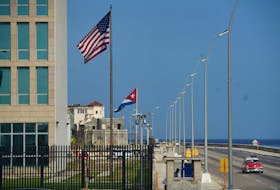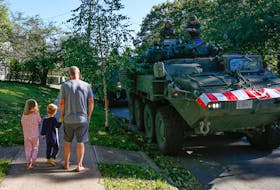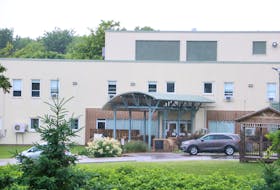The Paramedic Association of Newfoundland and Labrador would like to respond to an article published in The Telegram on Nov. 4. As an association, we feel the article was hypercritical of decisions made by our highly trained members and we would like to provide some insight into, how — and why — we make the decisions we do in emergency situations.
Firstly, it is important to note that PANL is not formally associated with private, community or health authority-run services, or the Provincial Medical Oversight office. We are an independent association that represents all paramedics and emergency medical responders in the province. This response represents the opinions of us, and only us.
While we cannot comment on the specifics of the case discussed in the Nov. 4th article, we would like to address some areas which we feel could lead to misconceptions about the respected and important role we play in health care in our province.
These decisions are made with a great deal of thought and care.
Paramedics in Newfoundland and Labrador are more than simply ambulance attendants or drivers — we are trained medical professionals who are forced to make on-the-spot decisions to ensure, to the best of our abilities, the safety of our patients, ourselves and the public.
We empathize with the patient and family who felt they were not properly cared for by our members, and we are happy to know this patient is home and on the road to recovery. We cannot discuss the details of this particular situation; however, we can elaborate on details, such as:
• Why we choose to drive with or without “lights and sirens.”
• Why some patient transfers are delayed so initial treatment can begin immediately.
• Why specialized equipment is used to navigate patient homes.
When a member of the public requests an ambulance, the call is received and dispatched. Ideally, all calls would be assessed by a certified emergency medical dispatcher or EMD. EMDs use evidence-based scripts to help appropriately screen calls to identify the priority of the ambulance response. An ambulance may be dispatched emergency (lights and sirens) or urgent (no lights or sirens). Our responders are trained to make these decisions based on their assessment. Patients may not always understand why, during the most stressful days of their lives, our vehicles may not be travelling in emergency mode. These decisions are made to ensure the safety of the patient and family, and for the other drivers and pedestrians on our roads.
Paramedics have the ability to administer intravenous fluids and medications, as required, to correct life-threatening illnesses and injuries. Our trained health-care professionals first assess, treat, stabilize and transfer patients in the safest manner possible based on the symptoms they are experiencing. These decisions are made with a great deal of thought and care.
While we are there for you, we also need to ensure our personal health and safety. Our industry has pushed for the development of new technologies to aid us in lifting and moving patients safely, for patients and ourselves. The wheelchair referenced in the above-mentioned article was likely a device called a Stair Chair. This allows us to safely move patients in tight spaces and over stairs. Our stretchers are not designed to be taken over stairs, especially loaded with patients.
Additionally, very few homes are designed to have hallways and doorways wide enough to navigate easily and without causing damage to walls, millwork and furniture. Stretchers alone generally weigh from 95 to 140 lbs., without a patient. Adding gear can easily add another 40 to 50 lbs. on top of that. Walking backwards, even down just several steps, could be dangerous to even the fittest adults. All responders’ physical abilities are considered equal regardless of size, stature or gender when staffing ambulances.
PANL wishes to work with local government and health authorities to make progressive and positive changes to pre-hospital patient care in Newfoundland and Labrador. If you find yourself in the unfortunate circumstance where you feel you are not receiving the best possible care, or you don’t understand the reasoning behind certain actions, please feel free to ask us. We are here for you 24/7/365!
Rodney Gaudet, president
Paramedic Association of Newfoundland and Labrador
Torbay








